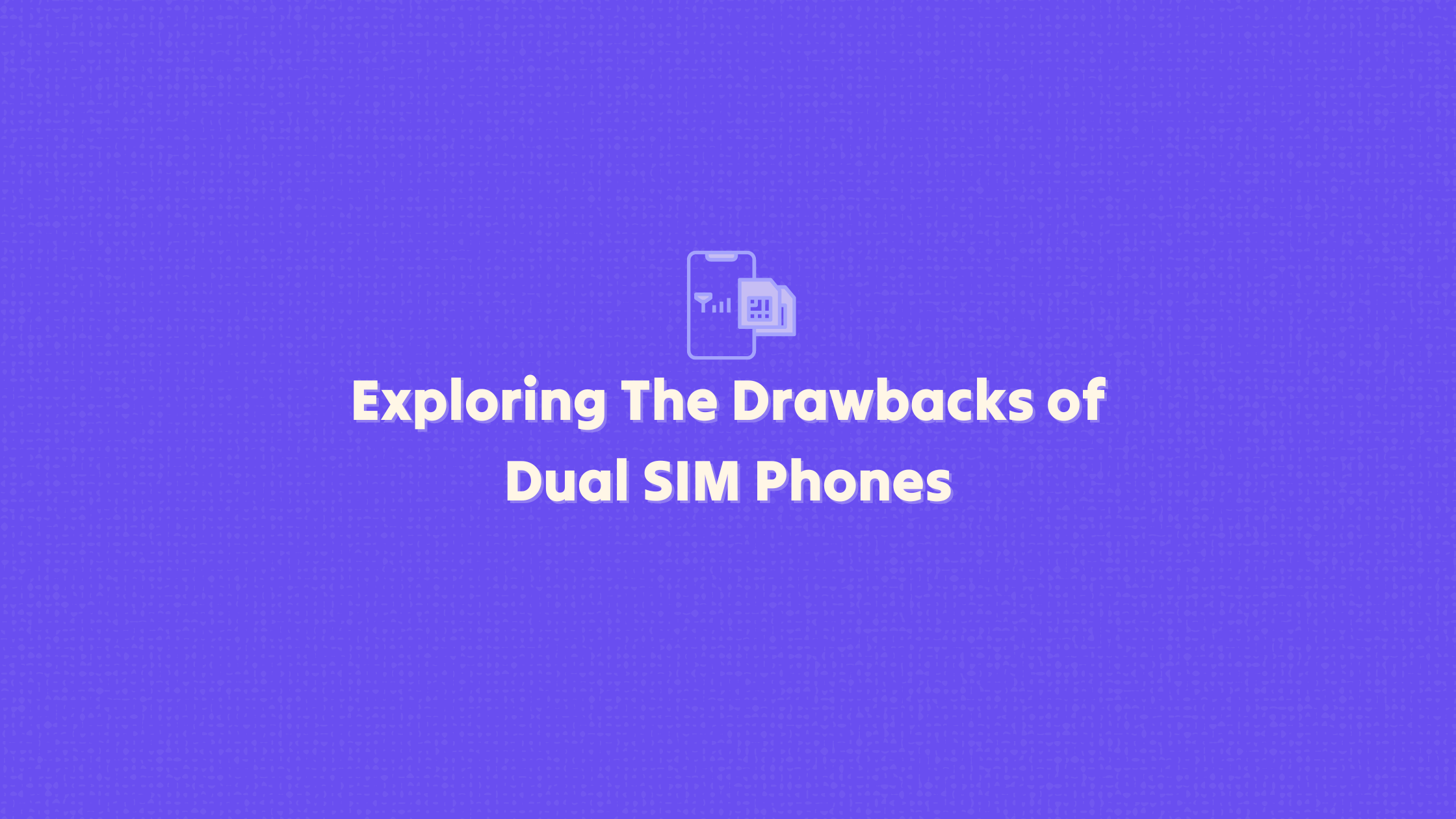
Key Takeaways
- A Dual SIM phone is one that can hold and operate two SIM cards simultaneously
- Advantages of using a dual SIM phone include: convenience, better network coverage, and travel flexibility
- However there are more drawbacks than advantages such as software limitations, limited simultaneous network access, and confusion in communications
- A better solution for you to get a second phone number is a virtual phone number
What are Dual SIM Mobile Phones
A dual SIM mobile phone is a type of device that has the capability to hold and operate two SIM cards simultaneously. SIM cards, which stand for Subscriber Identity Module, are small chips that store the unique identification and service information of a mobile network subscriber. With a dual SIM phone, users can insert two different SIM cards from either the same or different network providers into a single device.
Advantages of Dual SIM Phones
Using a dual SIM phone has various advantages:
- Convenience – Dual SIM phones eliminate the need to carry multiple phones for different purposes
- Cost savings – With a dual SIM phone, you can take advantage of different service plans or promotional offers from multiple network providers, potentially saving money on calls, texts, and data
- Network coverage – using SIM cards from different network providers ensures better network coverage in areas where one network may have weak or no signal
- Separation of personal and business use – You can keep your personal and professional communications separate by using different SIM cards for each purpose, helping you maintain work-life balance
Disadvantages of Dual SIM Mobile Phones
While dual SIM phones offer numerous advantages, they also have drawbacks to consider depending on how you need to use your second phone number e.g. for business:
- Limited choice of provider – Some dual SIM phones are locked onto the mobile service provider you purchased the phone from. This limits your ability to use different service providers for your second SIM card. It also can lead to increased costs as opposed to savings. This is because you may need to purchase an additional plan from the same provider meaning you can’t take advantage of other offers available.
- Reduced storage capacity – In some dual SIM phones, the second SIM card slot may be shared with the microSD card slot. This means that if you use two SIM cards simultaneously, you may have to sacrifice expandable storage, which can be a limitation if you frequently store large amounts of media files or apps on your device.
- Battery life – Using two SIM cards simultaneously can consume more battery power than using a single SIM. The additional network connections and constant signal searching may lead to increased power consumption, requiring more frequent charging.
- Software limitations – Certain dual SIM phones have limitations in terms of software functionality. For instance, some models may restrict certain features, such as data roaming or call forwarding, to a specific SIM card. This also limits your ability to use a second SIM for business purposes as to conduct business communications effectively, you’ll need to be able to utilise such features.
- Call and messaging confusion – Managing calls and messages on a dual SIM phone can sometimes be confusing. It may not be immediately clear which SIM card is being used for outgoing calls or texts, leading to potential mix-ups or accidental use of the wrong SIM.
- Limited simultaneous network access – While you can have two active SIM cards in a dual SIM phone, it’s important to note that typically only one SIM card can access 4G or 5G data networks at a time. Data speeds will be affected when the other SIM is limited to 2G or 3G networks. Furthermore, when using one SIM card, the other is often turned off or you’ll have very limited network access. This can result in delays receiving important calls or texts, which can negatively impact your business if you use a second SIM.
limitations can vary depending on the model and manufacturer. It’s advisable to research and compare different dual SIM phones before making a purchase to ensure it meets your specific requirements and preferences.
While dual SIM phones offer a range of advantages, they also come with their fair share of drawbacks. Ultimately, it’s crucial to consider your specific needs and usage patterns to determine if the advantages outweigh the drawbacks for your particular situation. By carefully assessing these aspects, you can make a choice that aligns with your communication requirements and enhances your overall mobile experience.
What’s a better alternative to Dual SIM phones?
While Dual SIM phones are a good option for those looking to get a second phone number, may we introduce you to a solution without all the drawbacks…
Did you know you can get a virtual phone number that doesn’t require you to get a second SIM card? Virtual phone numbers work by using a WiFi or data connection to facilitate calls and texts through an app. This means all you need is a stable internet connection and you’re good to go. Virtual phone numbers are a convenient way to get a second phone number and virtual phone number providers like Devyce are particularly valuable to business users.
Devyce is more than just a phone number. It’s designed to elevate business communications. With access to advanced features like call forwarding and AI call summarisation, you’ll take your business communication to a new level of coordination and efficiency.
Check out Devyce for your business today!
